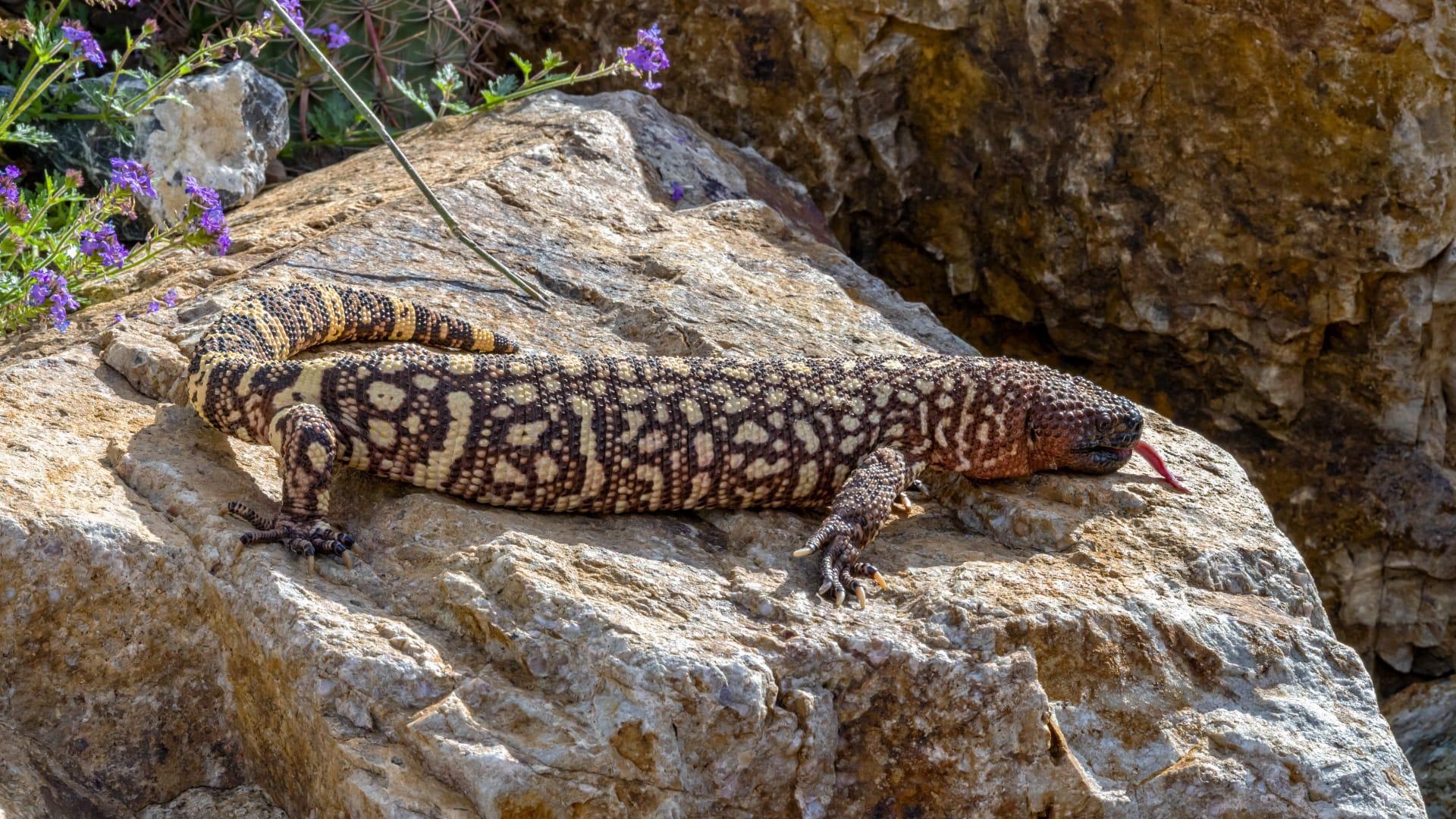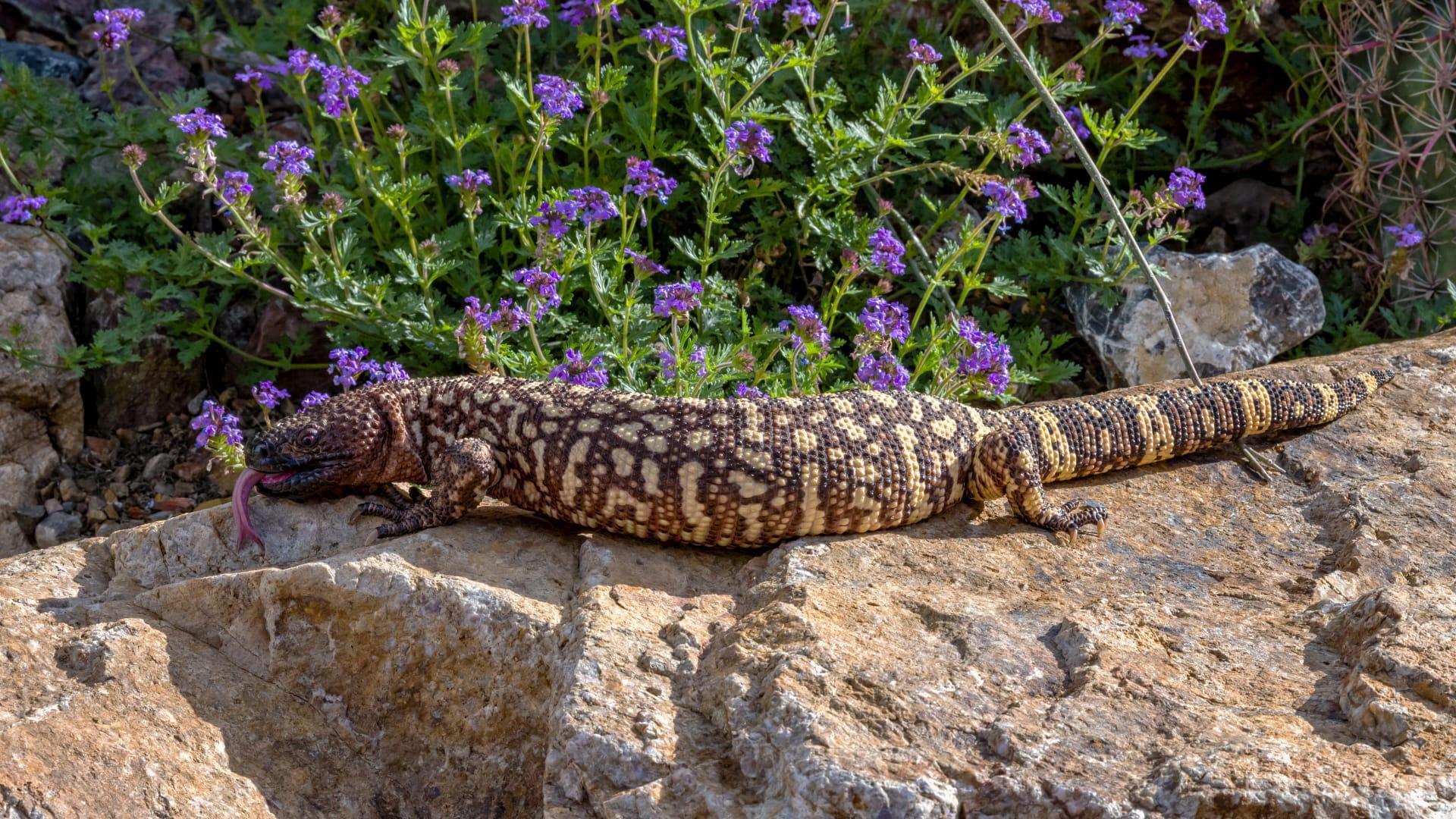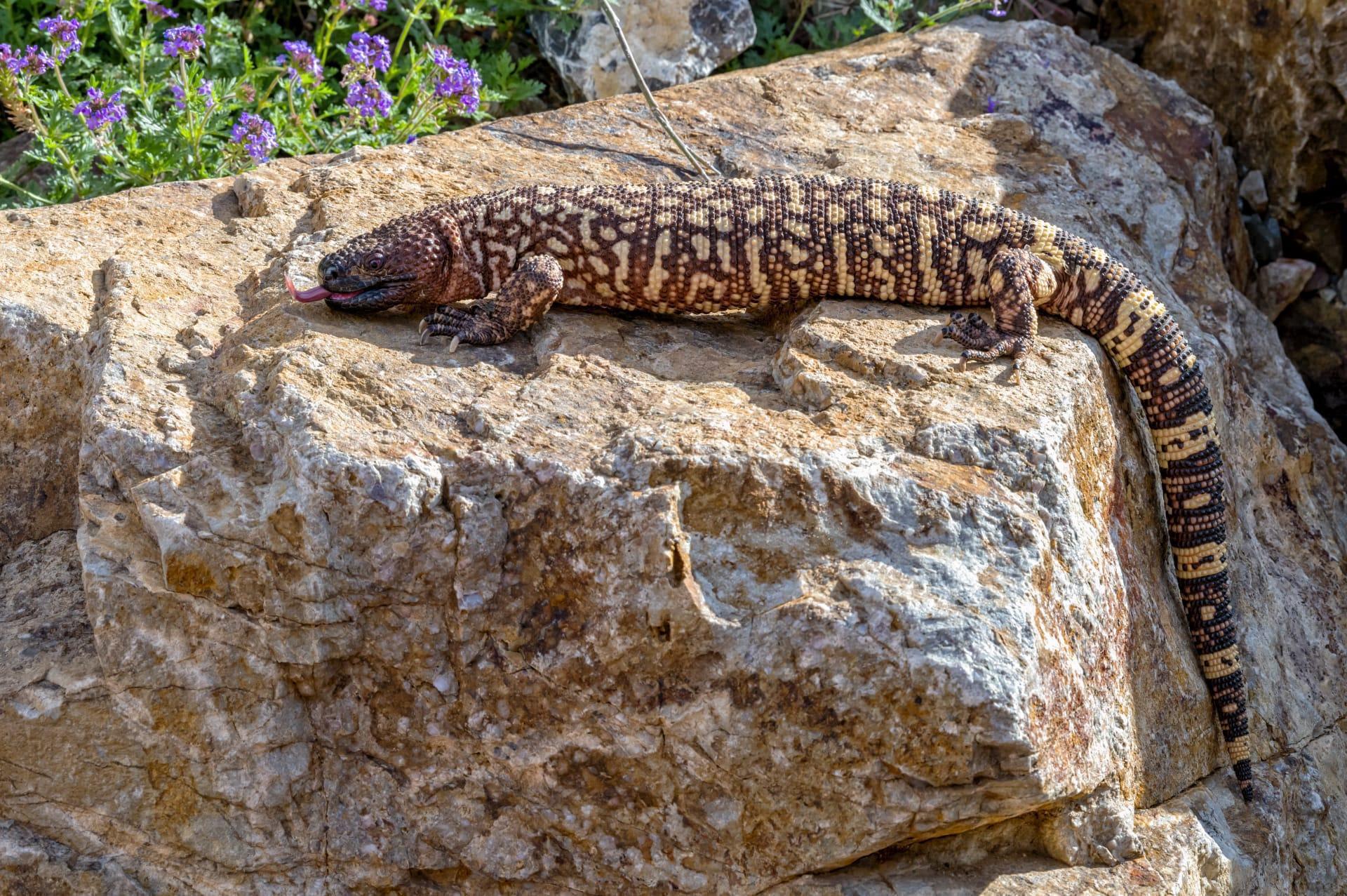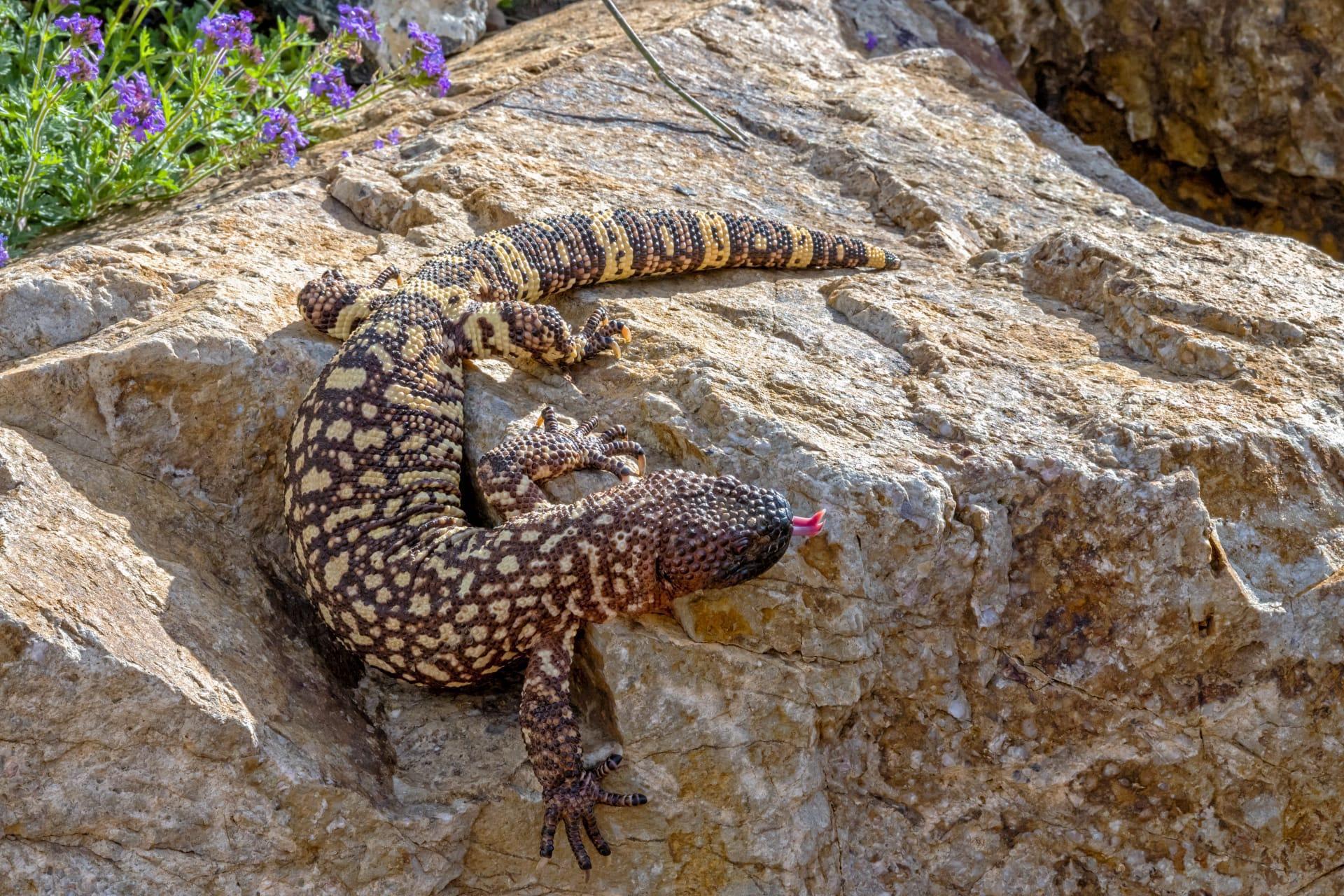1
The Mexican Beaded Lizard, a native of Mexico and Central America, is one of the few venomous lizards in the world. Unlike snakes that inject venom through hollow fangs, the beaded lizard delivers its venom through grooves in its lower teeth. When it bites, it must chew to introduce the venom into its victim, a process facilitated by its powerful jaw muscles.
This fascinating lizard sports a distinctive look with a bead-like appearance on its skin. These beads are actually osteoderms, bony deposits that form scales, plates, or other structures in the dermal layers of the skin, providing a form of armor. This unique adaptation not only serves as protection but also gives the lizard its characteristic bumpy texture, which is particularly visible in the sunlight.

2
The diet of the Mexican Beaded Lizard is quite varied, but it shows a particular fondness for eggs. It hunts primarily at night, using its strong sense of smell to locate eggs buried in the ground or hidden in nests. This lizard can consume eggs of various sizes, from small bird eggs to larger ones like those of chickens and even iguanas.
Interestingly, the Mexican Beaded Lizard has a low metabolic rate and a hefty appetite, allowing it to eat large meals less frequently. It can devour a meal equivalent to one-third of its body weight in a single feeding. This ability is crucial for its survival, as food can be scarce in its natural habitat. After a large meal, it can go for weeks, even months, without eating again.

3
One of the most remarkable aspects of the Mexican Beaded Lizard is its reproduction process. It exhibits a unique form of egg retention, where the female retains the eggs inside her body for several months before laying them. This period of egg retention can last up to six months, significantly longer than most other reptiles.
The eggs of the Mexican Beaded Lizard are quite large in comparison to the size of the female. Each egg can measure up to 5 centimeters in length, which is substantial considering the lizard's overall size. The female usually lays between 2 to 12 eggs, and these eggs have a relatively long incubation period, taking about 150 days to hatch.

4
The Mexican Beaded Lizard has a remarkable adaptation for survival in arid environments. It has the ability to absorb water through its skin, especially during the rainy season. This unique adaptation allows the lizard to hydrate itself without needing to find standing water, which is often scarce in its native habitat.
Another interesting trait of this lizard is its long lifespan. In captivity, the Mexican Beaded Lizard can live up to 30 years, a notably long life for a reptile. This extended lifespan is attributed to its slow metabolism and the relatively predator-free environment provided in captivity. In the wild, however, their lifespan is typically shorter due to natural predators and environmental challenges.

5
The Mexican Beaded Lizard possesses a highly developed Jacobson's organ, an olfactory sense organ located on the roof of its mouth. This organ is essential for detecting prey and navigating its environment. The lizard uses its tongue to collect scent particles from the air or ground, which it then analyzes with its Jacobson's organ to locate food sources or potential threats.
Despite its venomous nature, the Mexican Beaded Lizard plays a crucial role in local ecosystems. It helps control the population of small mammals and insects, contributing to ecological balance. Additionally, its preference for eggs helps in regulating the population of various bird and reptile species, thus maintaining a healthy and balanced food chain in its habitat.